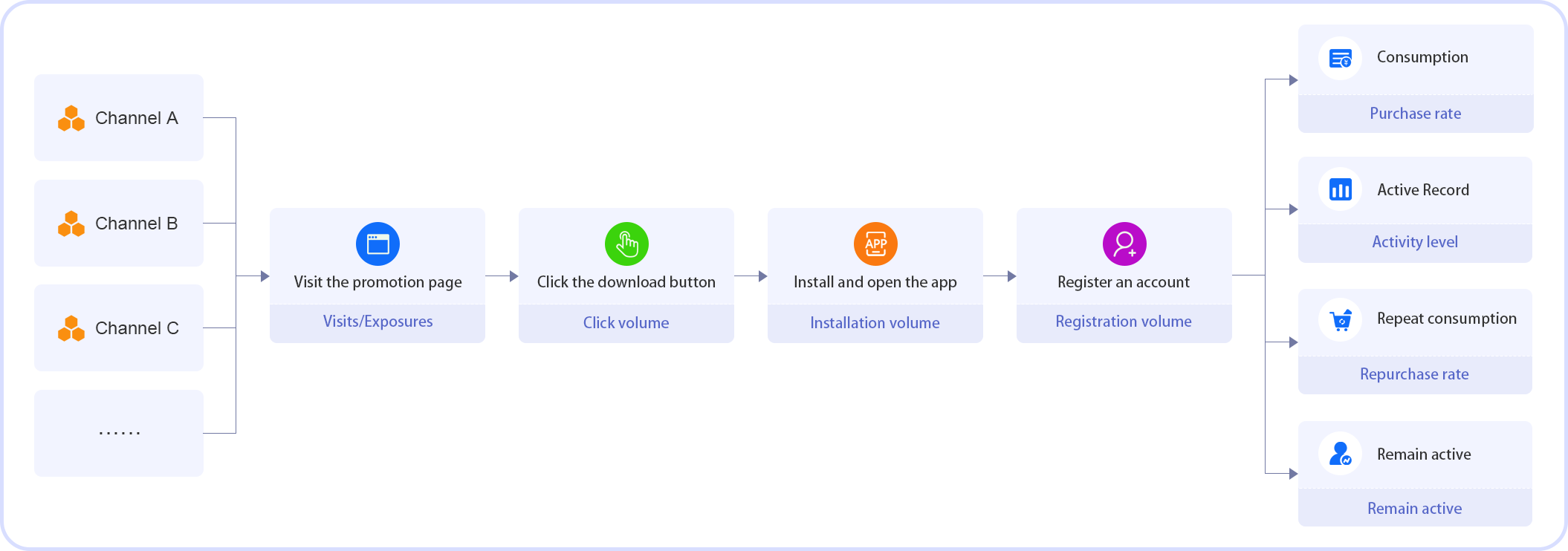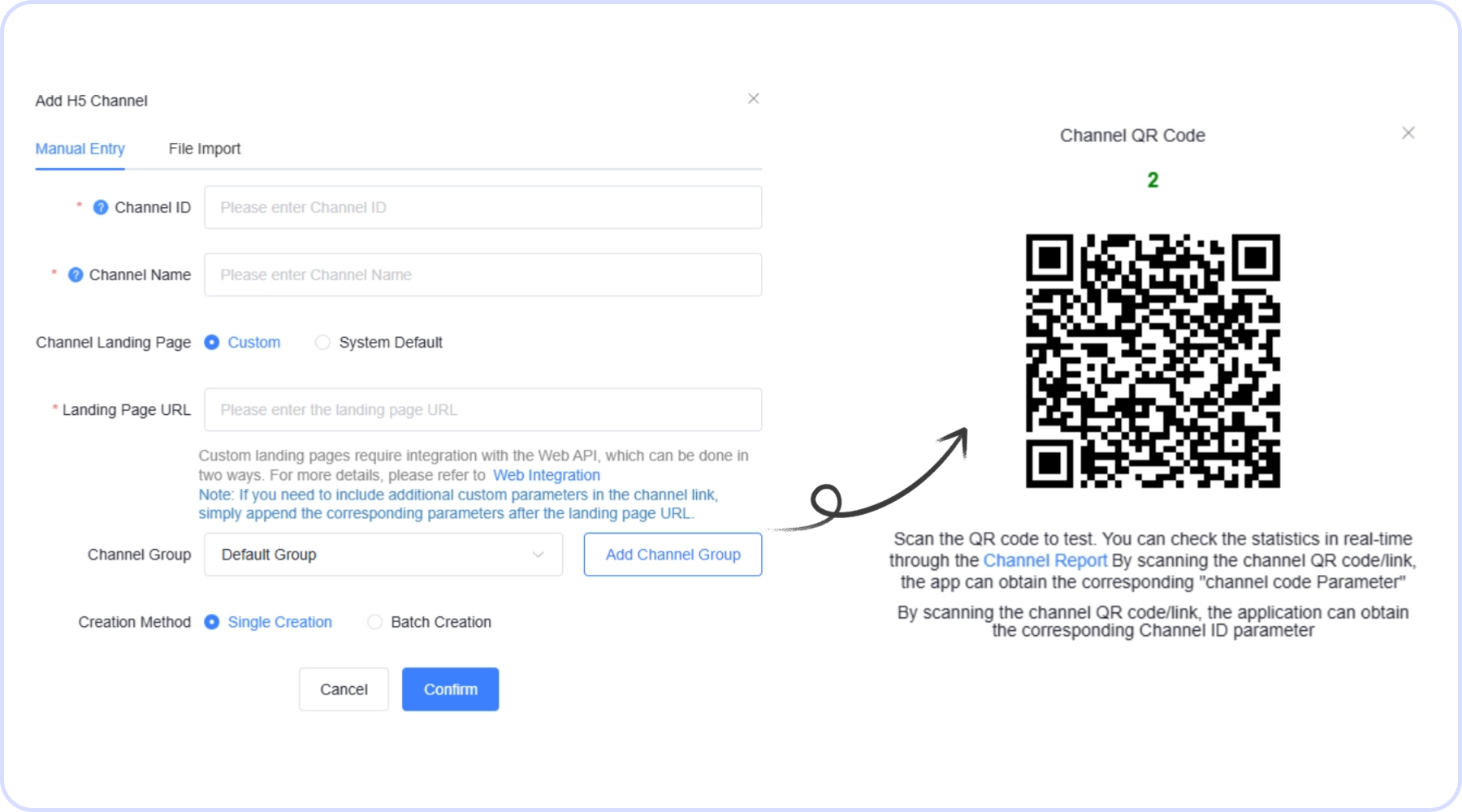
How to Use App Install Parameters for Channel Attribution
- 2025.10.10 11:00
- openinstall
- Product Dynamics
App growth boils down to two goals: expanding traffic and improving conversions. While most companies use a multi-channel strategy to attract users, this complexity creates critical questions: Where is our traffic coming from? Which channels convert best? And how can we optimize our performance?
The answer lies in passing channel parameters during installation. This technique enables powerful attribution analysis, giving you clear insight into the value of every channel, campaign, and team member, and empowering you to build a smarter growth strategy.
Data Ambiguity in a Multi-Channel World
Without proper attribution, your marketing data can be confusing and unreliable. Common challenges include:
- Measuring Diverse Channels: How do you apply a unified standard to measure the ROI of different ad networks, marketing teams, and conversion paths, each with unique costs and goals?
- Accurate User Identification: When a user interacts with your brand across multiple devices and platforms, how do you accurately trace the install back to its true origin?
- Scaling Your Tracking: As you expand to hundreds or thousands of promotional channels, how do you efficiently manage tracking links and analyze massive amounts of data?
To cut through this noise, you need a solution like openinstall’s parameter passing for installs. It provides the foundation for precise attribution, fraud prevention, and complete full-funnel monitoring.
I. The Core of App Attribution: How Parameter Passing Works
What are the key steps and metrics in app attribution?
While conversion funnels vary, the goal is always to understand channel value. Did a user who downloaded the app come from a web search, another app, an offline QR code, or a specific ad? Every step—from the initial ad impression to the landing page and finally the app store—contains variables that impact your final conversion rate.

You can track all of this by passing custom parameters during the app installation process.
II. A Flexible Guide to Implementing Custom Parameter Tracking
openinstall’s parameter passing feature transmits data from a web link directly into your app upon first open, instantly identifying the installation source.
Here’s a simple example:
A user clicks a link like www.your-site.com?id=01&name=jack. After the user downloads and opens the app, the openinstall SDK automatically retrieves the parameters (id=01 and name=jack). You now know exactly which link drove that install.

Implementation is straightforward:
- Integrate the SDK into your app and on your web landing page.
- Append Custom Parameters to your landing page URLs. You can add as many as you need to capture rich data, like this:www.your-site.com/promo?id=A&campaign=SummerSale®ion=USA
Using “&” to separate parameters, you can track the channel, campaign, date, region, or any other custom data point. - Retrieve Parameters in the App. When a user opens the app for the first time, the openinstall SDK makes these parameters available, linking the new user back to the specific source.
This powerful and precise identification enables advanced features that dramatically improve efficiency and user experience, such as code-free invitations, automatic relationship binding, and deferred deep linking.
Key Advantages:
- Enables Powerful Scenarios: Create seamless referral programs where invitation codes are no longer needed. The app automatically knows who referred the new user.
- Flexible and Convenient: Simply add your custom parameters to any URL where the Web SDK is integrated. It’s simple, fast, and highly adaptable.
- Developer-Friendly: The integration is straightforward and compatible with a wide range of use cases, allowing you to easily forward the data to your own BI systems for custom analysis.
III. How to Analyze Channel Data Instantly
The openinstall dashboard provides a complete, out-of-the-box solution for channel management and analysis.
You can instantly generate unique tracking links for every channel without ever needing to re-package your app. Simply define a channel name, code, and landing page in the dashboard to create a unique URL. This link automatically includes a parameter (e.g., channelCode=your_code) for attribution.

When a user installs through this link, openinstall tracks the entire funnel in real-time—including visits, clicks, installs, registrations, and retention—and presents the data in clean, easy-to-read reports. This system effortlessly scales to thousands of channels, eliminating the tedious work of managing separate app builds.

For custom analysis, you can access your data in two ways:
- Via the SDK: Retrieve the channel code directly within your app to feed data into your own analytics systems.
- Via API: Use the openinstall API to pull your channel data for storage or to build custom, in-house reports.
Summary
By leveraging multi-parameter passing, openinstall provides a complete solution for mobile growth, delivering:
Precise channel source attribution, flexible custom parameters, scalable tracking links, automatic relationship binding, cross-platform (Android/iOS) compatibility, full-funnel analytics, and rich data reporting.
Technically, parameter passing allows you to eliminate wasteful spending and maximize your marketing ROI. By using a professional and efficient tool, you can achieve immediate results, turning raw data into a clear roadmap for growth.
Recent Posts
- What benefits can a Web to App attribution solution bring?
- IMore than just “data calculation”: The underlying logic of APP channel agent statistics is the key to doubling conversion efficiency
- How to Use App Install Parameters for Channel Attribution
- How does openinstall optimize App operation
- Offline app promotion: QR code statistics channel data
- Build the CPA/CPS settlement system through openinstall
- Firebase Dynamic Links shutdown, How to select Deep Links?
- Firebase Dynamic Links disable: openinstall solution
- How to attribute data through Web to App(W2A)
- Optimization methods for H5 landing pages



